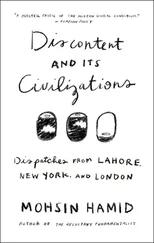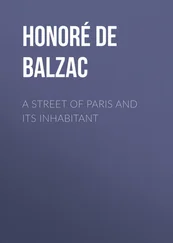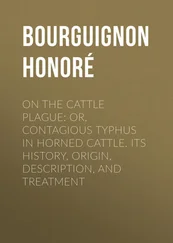Henry Edwards - Old and New Paris - Its History, Its People, and Its Places, v. 1
Здесь есть возможность читать онлайн «Henry Edwards - Old and New Paris - Its History, Its People, and Its Places, v. 1» — ознакомительный отрывок электронной книги совершенно бесплатно, а после прочтения отрывка купить полную версию. В некоторых случаях можно слушать аудио, скачать через торрент в формате fb2 и присутствует краткое содержание. Жанр: foreign_antique, foreign_prose, Путешествия и география, на английском языке. Описание произведения, (предисловие) а так же отзывы посетителей доступны на портале библиотеки ЛибКат.
- Название:Old and New Paris: Its History, Its People, and Its Places, v. 1
- Автор:
- Жанр:
- Год:неизвестен
- ISBN:нет данных
- Рейтинг книги:4 / 5. Голосов: 1
-
Избранное:Добавить в избранное
- Отзывы:
-
Ваша оценка:
- 80
- 1
- 2
- 3
- 4
- 5
Old and New Paris: Its History, Its People, and Its Places, v. 1: краткое содержание, описание и аннотация
Предлагаем к чтению аннотацию, описание, краткое содержание или предисловие (зависит от того, что написал сам автор книги «Old and New Paris: Its History, Its People, and Its Places, v. 1»). Если вы не нашли необходимую информацию о книге — напишите в комментариях, мы постараемся отыскать её.
Old and New Paris: Its History, Its People, and Its Places, v. 1 — читать онлайн ознакомительный отрывок
Ниже представлен текст книги, разбитый по страницам. Система сохранения места последней прочитанной страницы, позволяет с удобством читать онлайн бесплатно книгу «Old and New Paris: Its History, Its People, and Its Places, v. 1», без необходимости каждый раз заново искать на чём Вы остановились. Поставьте закладку, и сможете в любой момент перейти на страницу, на которой закончили чтение.
Интервал:
Закладка:
Thus the odious attempt failed in its object; the royal family was saved. No language can express the utter horror which this frightful and cowardly attack created in the minds of the assembled multitudes. An aide-de-camp immediately galloped off to reassure the Queen, and the King continued his progress amidst manifestations of the deepest sympathy and the most enthusiastic loyalty.
As a striking exemplification of the sang-froid of Louis Philippe it has been gravely related, on the alleged authority of Marshal Maison, that immediately after the fatal occurrence, and while all around were overwhelmed with dismay and grief, the King’s mind rapidly glanced over all the possible advantages which might be drawn from the event, and that he exclaimed, “Ah, now we are sure to get the appanages!” But this anecdote, in itself improbable, must be received with more than the usual grain of salt.
Meantime, at the moment of the explosion, clouds of smoke were seen to issue from a window on the third floor of the house number fifty. A man got out of this window, and seizing a double rope which was fastened inside, slid down it on to the roof of a lower building. He was but half-dressed, and his face streamed with blood. A flower-pot which was caught in the movement of the rope after he quitted hold of it fell to the pavement, and the noise attracted the attention of an agent of police who had been posted in the courtyard of the house. “There is the assassin escaping on the roof!” he exclaimed; and one of the National Guards at once called upon the fugitive to surrender, threatening to fire if he refused. But the man, wiping away with his hand the veil of blood which obscured his sight, dashed on and made his way through an open window into an adjoining house. A track of blood indicated his route, as though his own crime pursued him. He reached the courtyard too late to escape unobserved, and was at once taken into custody.
In the room whence he had fled were found the smoking remains of his death-dealing machine. It was raised upon a sort of scaffolding on four square legs connected together by strong oak cross-pieces. Twenty-five musket barrels were fastened by the breech upon the cross-piece at the back, which was higher than the front traverse by about eight inches. The ends of the barrels rested in notches cut in the lower traverse. The touch-holes were exactly in a line, so as to take fire simultaneously by means of a long train of gunpowder. The guns had been placed so as to receive the procession slantingly, embracing a large range, and rising from the legs of the horses to the heads of the riders. The charge in each barrel was a quadruple one. Fortunately, the calculations of the assassin were frustrated. Two of the barrels did not go off, four of them burst; and to these chances the King doubtless owed his life.
Fieschi was found, on inquiry, to have lodged in the house for several months. He stated himself to be a machinist. The porter had never been inside Fieschi’s room since he had occupied it. There had been but one man to see Fieschi, whom he represented as his uncle, and three women, who, he said, were his mistresses. On the morning of the 28th he had been noticed to go in and out, up and down, in a visible state of agitation, and once, though habitually abstemious, he went into a neighbouring cafe to drink a glass of brandy. At the military post where he was taken upon his arrest, a National Guard having asked him who he was, “What’s that to you?” he replied, “I shall answer such questions when they are put by the proper people.” Some gunpowder having been found upon his person, he was asked what it was for. “For glory!” he exclaimed.
The trial of Fieschi and his accomplices took place on the 30th of January, 1836, before the Court of Peers assembled in the palace of the Luxembourg. In the body of the court, in front of the clerk’s table, were displayed, among other proofs against the prisoners, a machine supporting a number of guns in an inclined position, an extinguished firebrand, a dagger, a shot belt with a quantity of bullets in it, an iron gauntlet, and a bloodstained rope.
Fieschi, the chief conspirator, is described by Louis Blanc as “endowed with an energy and shrewdness which merely served to promote the aims of an inveterate and grovelling turpitude. Vain to a degree which almost approached insanity, this man had stained his life with every infamy. A Corsican by birth, he had fought bravely in the service of Napoleon. After the peace, however, he had launched upon a career of vice and crime. He had invented the so-called infernal machine (which was simply a battery of guns so arranged that they could be discharged from a window), not from any political or personal hatred of Louis Philippe, but simply as the hireling of a band of Republican and Revolutionary conspirators.”
Fieschi and his accomplices were duly guillotined. Other attempts had been made and were still to be made on the life of Louis Philippe. The ferocious exploit, however, of Fieschi remains the most notorious one of this reign. At last the Citizen King lost his nerve; and in February, 1848, disappeared in face of a danger not more formidable, if firmly met at the outset, than the one which he had despised thirteen years previously, in 1835.
Fieschi was simply guillotined; and he was the first regicide or would-be regicide in France who escaped torture. The horrible cruelties inflicted on the assassins of French kings may make many persons less sensitive than they otherwise would be to the misfortunes reserved for the successors of these princes. The only possible excuse for the diabolical punishments devised for regicides under the old French Monarchy is that such barbarity was of the age. The torture of Damiens was imitated in every detail from the torture of Ravaillac, which had for precedent the torture of Gérard, the assassin of the Prince of Orange. An ingenious French writer attempted to decide whether Ravaillac’s torments were greater than those of Gérard. It is certain in any case that the latter suffered with much greater constancy. Ravaillac shrieked out in a terrible manner, whereas Balthasar Gérard never uttered a groan.
In this connection it is curious that, from the middle of the eighteenth century until the time of the French Revolution, the name of Damiens, or Damian, at present venerated throughout the civilised world, was in France, its country of origin, one of such opprobrium that nobody ventured to bear it. No Frenchman, indeed, would have dared to do so; for after the attempt upon the life of Louis XV. the name of Damiens, or D’Amiens, his would-be murderer, with all names of similar sound or spelling were, by a special edict, absolutely proscribed. To go by the name of D’Amiens, Damiens, or Damian, was to proclaim oneself affiliated nearly or remotely to the unspeakable being – the regicide, the parricide – who had lifted his hand against the Lord’s anointed. Time has its revenges. The name associated a century and a half ago with villainy and crime is now suggestive only of heroism and virtue. Everyone knows by what glorious acts of self-sacrifice Damien, enthusiast and martyr, has brought honour to a once unutterable name.
The French Revolution, which was separated from the torture of Damiens by only thirty-eight years, is associated with a number of sanguinary deeds. But it at least put an end to torture. No such horrors as had been perpetrated under the French Monarchy were ever to take place under the French Republic. Even in the case of ordinary criminals not specially condemned to torture, death, under the old Monarchy, was inflicted in the cruellest fashion. “After a prisoner has seen death under so many forms,” says a writer of the time of Louis XVI., “when his soul is in a manner withered, his spirit exhausted, and life is grown a burthen, the sentence that ends his sufferings should be welcome to him – and it would be so were not our laws more calculated to torture the body than simply to punish the criminal. A man who pays the forfeit of his life to the injured laws of his country has, in the eyes of reason, more than sufficiently atoned for his crime; but here industrious cruelty has devised the most barbarous means of avenging the wrongs done to society; and the breaking the bones of a wretch on a cross, twisting his mangled body round the circumference of a wheel, are inventions worthy of the fertile brains of a Phalaris, and show to the utmost that such inhuman laws were more levelled against the man than the crime for which he is doomed to suffer.”
Читать дальшеИнтервал:
Закладка:
Похожие книги на «Old and New Paris: Its History, Its People, and Its Places, v. 1»
Представляем Вашему вниманию похожие книги на «Old and New Paris: Its History, Its People, and Its Places, v. 1» списком для выбора. Мы отобрали схожую по названию и смыслу литературу в надежде предоставить читателям больше вариантов отыскать новые, интересные, ещё непрочитанные произведения.
Обсуждение, отзывы о книге «Old and New Paris: Its History, Its People, and Its Places, v. 1» и просто собственные мнения читателей. Оставьте ваши комментарии, напишите, что Вы думаете о произведении, его смысле или главных героях. Укажите что конкретно понравилось, а что нет, и почему Вы так считаете.












